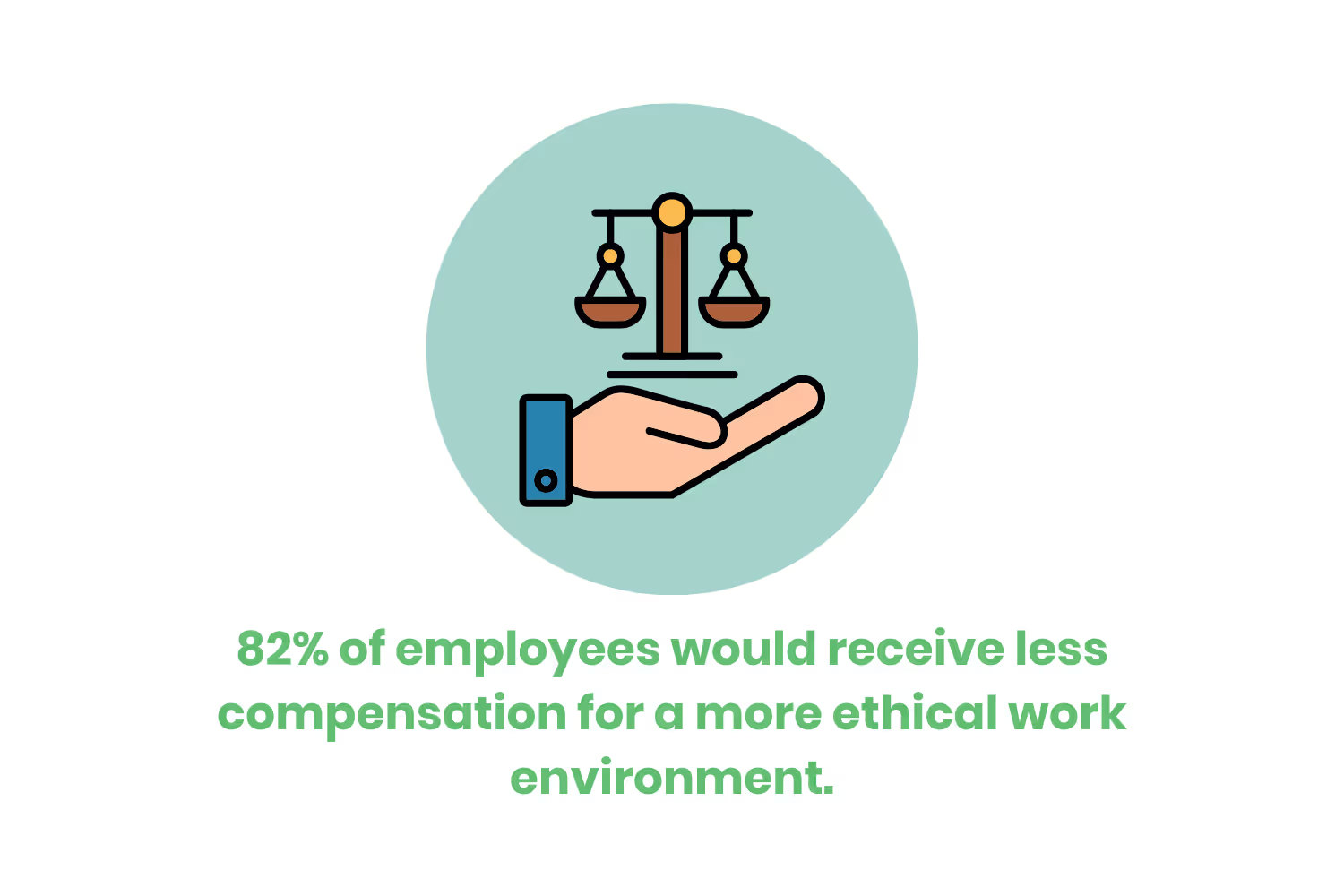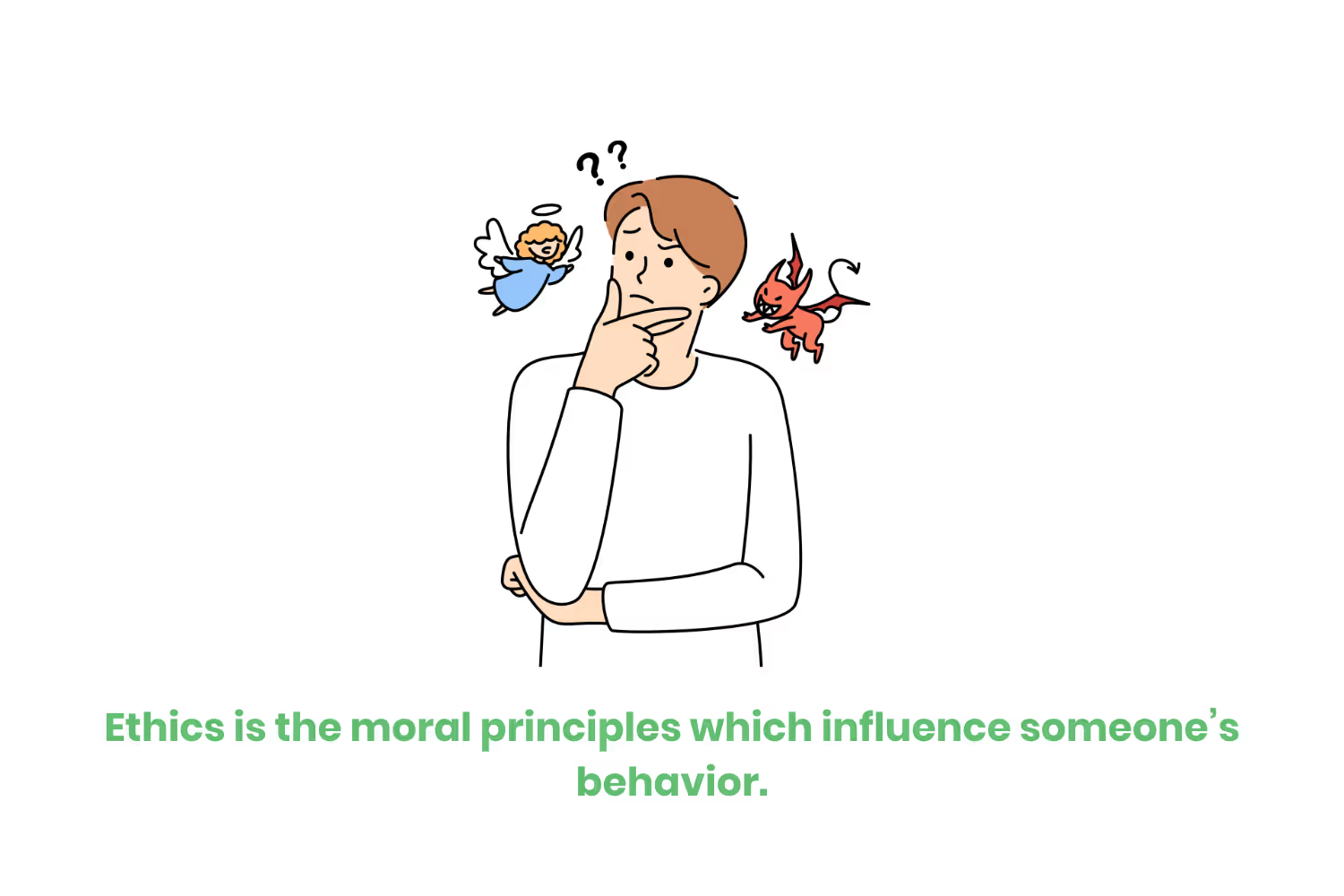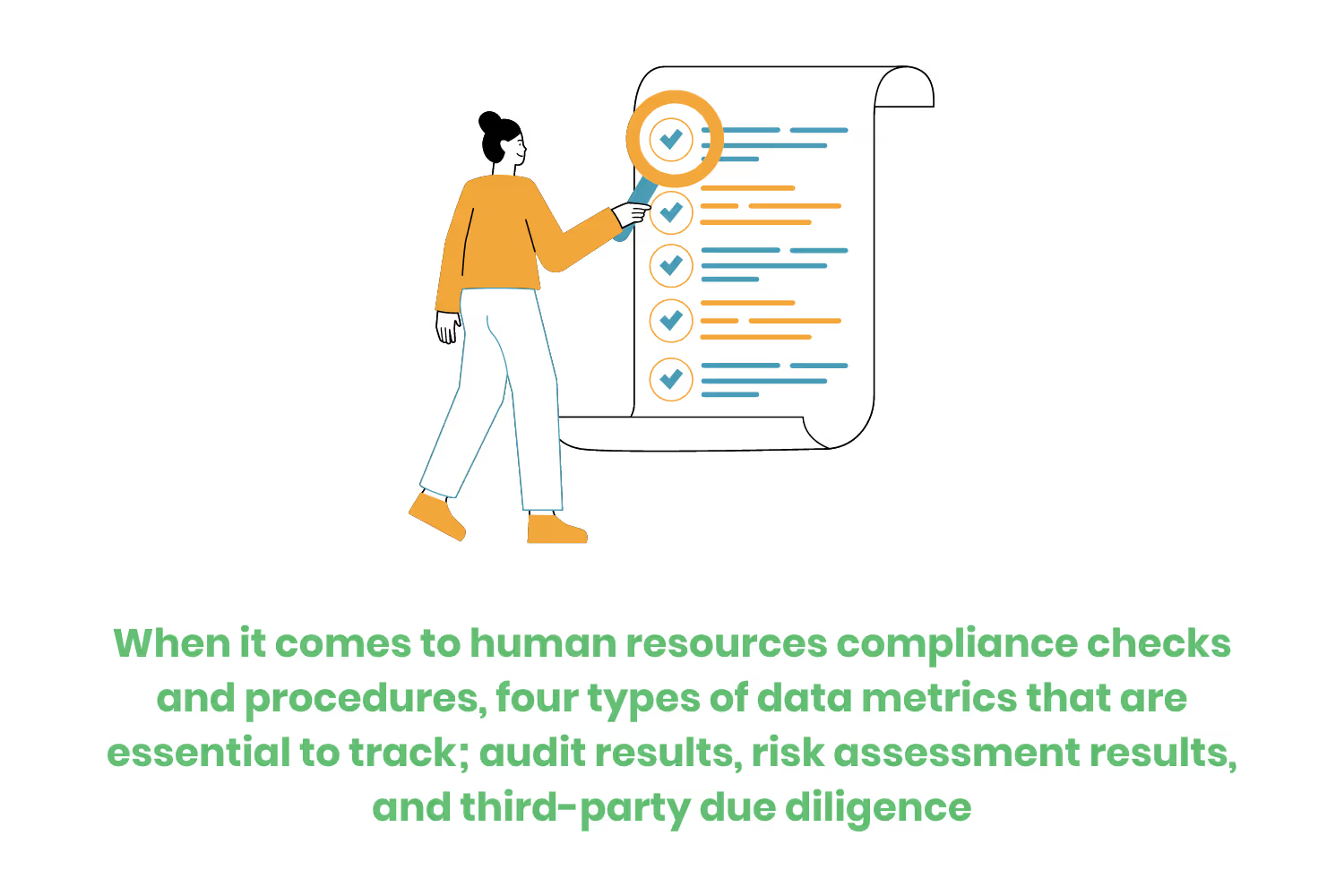13 Excellent Ethics Training Examples
Let’s take a look into ethics training example that keep your business compliant with the proper training.

An LRN survey reports that 82% of employees would receive less compensation for a more ethical work environment. We all make moral choices every day, and the workplace is not exempt from this. From this survey, we can observe that strong ethics in the business place is very important to employees. The old saying, “It’s not personal, it’s just business” no longer flies in today’s ever-changing political environment. At least not with ethical issues.

Oftentimes business leaders lose sight of these moral values in pursuit of success. Staying competitive with rival companies requires a rather blunt and calculated mindset. Oftentimes, sacrifices are necessary. However, these should never undercut ethical values.
Keeping compliant helps to preserve your employee retention. Not only that, but it saves your company from legal troubles and costly fines. So what exactly does it mean to act morally at work? How do you instill this in your employees?
Let’s take a look into ethics training example that keep your business compliant with the proper training.
Understanding Ethics
The idea of “ethics” as a subject does not originate from any specific period. Throughout history, many civilizations introduced their versions of ethical standards and literature concerning the theory. Although many tend to credit Ancient Greece with the more systemized study of theory.
The definition of ethics is the moral principles that influence someone’s behavior. As I mentioned at the beginning of this blog, not only does this apply to everyday life, but the workplace as well. The choices we make at work can have great consequences when it comes to legal and social standing. This is why companies need to train their employees to provide standards on how to act with integrity.

Because ethics are not always from a black-and-white standpoint, it can be a difficult topic to cover. And although a company may operate within the applicable laws and regulations, they can still be unethical. To avoid landing in this gray area, companies must uphold certain standards and policies regarding business ethics.
Examples of Good Ethical Behavior
There are many examples of having good ethics in business and towards your peers. Such as relying on principles like confidentiality and transparency in communication. Demonstrating respect for others through dignity and diversity are a few traits to encourage amongst your team. Some other traits of having good ethics include, but are not limited to:
- Honesty.
- Dependability.
- Professionalism.
- Dedication.
- Team-oriented.
- Consistently acting with good values.

Examples of Unethical Behavior
With the good inherently comes the bad. I’ll go over some bad ethical traits to avoid inside and outside of the workplace:
- Gossiping.
- Harassment.
- Unfairness.
- Theft.
- False advertising.
- Data breaching.
- Lack of communication.
When it comes to unethical behavior there are a few causes that regularly plague the work environment. Being aware of what might prompt toxicity in the workplace can help you get a preemptive edge on the situation. A big reason for unethical business practices comes down to needing to meet unrealistic deadlines. As well as pressure to earn profits, especially from stakeholders.
Here are a few other examples of situations which may lead to unethical behavior:
- Increase in market competition as well as economic greed.
- Lack of proper management support/closed-door policy.
- Poor leadership in the organization.
To avoid running into ethical issues, your policies should focus on guiding your employees toward a healthier work environment. Employees of all levels should learn what they are responsible for while representing their company. This is where training comes in.

Business Ethics Training
To keep your employees compliant, keeping up to date with mandatory training is essential. It is well known that ethical behavior strengthens the foundation of business compliance. Most employees would not knowingly break laws or set out to hurt another coworker. However, a lack of knowledge is most often to blame when it comes to compliance failure.
Reinforcement of training amongst all levels of employees helps to reinforce organizational success. So, what sort of content should your training program cover? It helps to refer to Section 406 of the Sarbanes-Oxley Act of 2002. Within this section is the SOX Code of Ethics. This demands that public companies disclose the fundamental values in which they operate.
The SOX Code of Ethics covers:
- Conflicts of interest.
- Honest and ethical conduct.
- Disclosure of information.
- Compliance.
- Reporting.
- Confidentiality.
- Retaliation
- And more.

Supervisors are not immune to the demands of regular compliance training. They must complete the same courses, plus additional specialized courses about their upper management position. You want to be able to ensure the best use of company resources while also assisting in legal compliance. This way, leaders of the company can effectively reinforce principles that support the following goals:
- Create a positive public image.
- Maintain quality and productivity.
- Ensure employees utilize resources effectively.
- Successfully protect sensitive information.
- Enhance a professional environment.
Document General Rules and Regulations
Create a written set of general rules and regulations, and make them available to all employees. Make sure to give this handbook to them at the beginning of their employment.
Remember that offering a written set of rules will not be enough to train your employees. Instead, this introduces the desired behaviors expected of your staff and organization as a whole. These behaviors come in three different forms:
- Intended behavior: these are a person’s purpose and values.
- Expressed behavior: any advice, communications, training, as well as the tone of overall leadership.
- Actual behavior: someone’s practices as well as their perceptions.
Learning Objectives
When creating your training program, following the SOX Code of Ethics guidelines is important, but what exactly should you include?
To put everything in layman's terms, you want to make sure you cover the following subjects:
- Define what exactly business ethics is.
- Explain why organizations need training.
- Address social responsibilities that influence workplace ethics.
- Go over examples of ethical and unethical behavior.
- Review reporting procedures.
- Go over the causes of ethical issues.
- Review ethical best practices for management.
Assessing and Monitoring Ethical Behavior
With the breach of laws and regulations within your company, you can expect deteriorating ethics to be part of the problem.
When it comes to human resources compliance checks and procedures, four types of data metrics that are essential to track.
We are talking about audit results, risk assessment results, and third-party due diligence. As well as offering company culture employee surveys regularly to have more insight into the daily going-on of the office.

While continuing to monitor your workplace, keep in mind that although it might seem tedious, there are many benefits to training and enforcing policies.
Consider the following takeaways and goals when you create your business ethics training program:
- Respect the privacy of employees.
- Keep sensitive information secure.
- Follow set policies and rules.
- Fulfill your obligations.
- Keep accurate records and avoid excuses.
- Report problems promptly. Report complaints as well.
- Treat others with respect and consideration.
Conclusion
In this blog, I shared what it means to be a professional. A large piece of this puzzle is to make sure you act ethically and with integrity. Treat everyone the way you would want them to treat you. Showing poise in a professional setting looks like many things, such as owning up to mistakes and showing up as a dependable teammate.
There are some legal updates to look out for when creating your ethics training program. These updates may change from time to time, so it is worth keeping up on them every year and making adjustments to training as you need. Make sure to keep an eye on the following topics related to ethics training:
- Data privacy and cybersecurity.
- Workplace harassment and discrimination.
- Environmental sustainability.
Professionals must stay in the know when it comes to these legal revisions to preemptively avoid compliance issues. Depending on your industry, you may need to focus heavily on particular topics, but your organization should still touch on everything mentioned in this blog. You can avoid lawsuits, hefty fines, and employee turnover with a strong ethical workplace culture.
Emphasize your product's unique features or benefits to differentiate it from competitors
In nec dictum adipiscing pharetra enim etiam scelerisque dolor purus ipsum egestas cursus vulputate arcu egestas ut eu sed mollis consectetur mattis pharetra curabitur et maecenas in mattis fames consectetur ipsum quis risus mauris aliquam ornare nisl purus at ipsum nulla accumsan consectetur vestibulum suspendisse aliquam condimentum scelerisque lacinia pellentesque vestibulum condimentum turpis ligula pharetra dictum sapien facilisis sapien at sagittis et cursus congue.
- Pharetra curabitur et maecenas in mattis fames consectetur ipsum quis risus.
- Justo urna nisi auctor consequat consectetur dolor lectus blandit.
- Eget egestas volutpat lacinia vestibulum vitae mattis hendrerit.
- Ornare elit odio tellus orci bibendum dictum id sem congue enim amet diam.
Incorporate statistics or specific numbers to highlight the effectiveness or popularity of your offering
Convallis pellentesque ullamcorper sapien sed tristique fermentum proin amet quam tincidunt feugiat vitae neque quisque odio ut pellentesque ac mauris eget lectus. Pretium arcu turpis lacus sapien sit at eu sapien duis magna nunc nibh nam non ut nibh ultrices ultrices elementum egestas enim nisl sed cursus pellentesque sit dignissim enim euismod sit et convallis sed pelis viverra quam at nisl sit pharetra enim nisl nec vestibulum posuere in volutpat sed blandit neque risus.

Use time-sensitive language to encourage immediate action, such as "Limited Time Offer
Feugiat vitae neque quisque odio ut pellentesque ac mauris eget lectus. Pretium arcu turpis lacus sapien sit at eu sapien duis magna nunc nibh nam non ut nibh ultrices ultrices elementum egestas enim nisl sed cursus pellentesque sit dignissim enim euismod sit et convallis sed pelis viverra quam at nisl sit pharetra enim nisl nec vestibulum posuere in volutpat sed blandit neque risus.
- Pharetra curabitur et maecenas in mattis fames consectetur ipsum quis risus.
- Justo urna nisi auctor consequat consectetur dolor lectus blandit.
- Eget egestas volutpat lacinia vestibulum vitae mattis hendrerit.
- Ornare elit odio tellus orci bibendum dictum id sem congue enim amet diam.
Address customer pain points directly by showing how your product solves their problems
Feugiat vitae neque quisque odio ut pellentesque ac mauris eget lectus. Pretium arcu turpis lacus sapien sit at eu sapien duis magna nunc nibh nam non ut nibh ultrices ultrices elementum egestas enim nisl sed cursus pellentesque sit dignissim enim euismod sit et convallis sed pelis viverra quam at nisl sit pharetra enim nisl nec vestibulum posuere in volutpat sed blandit neque risus.
Vel etiam vel amet aenean eget in habitasse nunc duis tellus sem turpis risus aliquam ac volutpat tellus eu faucibus ullamcorper.
Tailor titles to your ideal customer segment using phrases like "Designed for Busy Professionals
Sed pretium id nibh id sit felis vitae volutpat volutpat adipiscing at sodales neque lectus mi phasellus commodo at elit suspendisse ornare faucibus lectus purus viverra in nec aliquet commodo et sed sed nisi tempor mi pellentesque arcu viverra pretium duis enim vulputate dignissim etiam ultrices vitae neque urna proin nibh diam turpis augue lacus.




